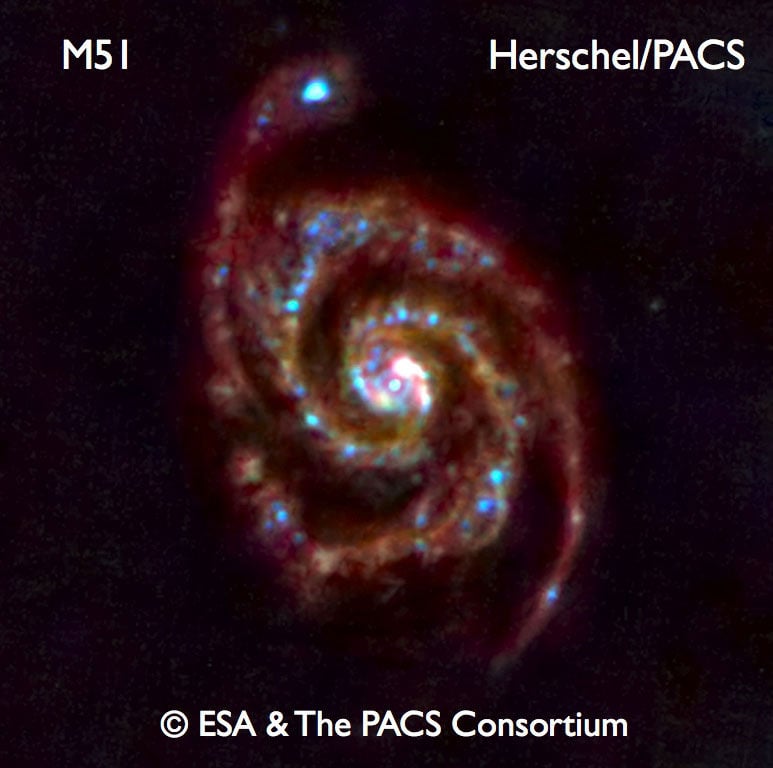[/caption] The Herschel Telescope has given us a sneak preview of the infrared observational goodness we can expect from this new space telescope. The protective cryocover was taken off on June 14, and Herschel opened its 'eyes,' using the Photoconductor Array Camera and Spectrometer to take a few images of M51, 'the whirlpool galaxy' for a first test observation. The telescope obtained images in three colors from the observation, showing this largest of infrared space telescopes ever flown is functioning in fine form. Wonderful!
The above image shows the famous 'whirlpool galaxy', first observed by Charles Messier in 1773, who provided the designation Messier 51 (M51). This spiral galaxy lies relatively nearby, about 35 million light-years away, in the constellation Canes Venatici. M51 was the first galaxy discovered to harbor a spiral structure.
The image is a composite of three observations taken at 70, 100 and 160 microns, taken by Herschel's Photoconductor Array Camera and Spectrometer (PACS) on June 14 and 15. [caption id="attachment_32920" align="aligncenter" width="580" caption="M51 seen by Spitzer (left) and Herschel (right). Credit: ESA"]
[/caption] As a comparision, to the left is the best image of M51, taken by NASA's Spitzer Space Telescope, with the Multiband Imaging Photometer for Spitzer (MIPS), and on the right is Herschel's observation at 160 microns. The obvious advantage of the larger size of the telescope is clearly reflected in the much higher resolution of the image: Herschel reveals structures that cannot be discerned in the Spitzer image.
And here is Herschel's glimpse of M51 at 70, 100, 160 microns: [caption id="attachment_32921" align="aligncenter" width="580" caption="M51 Herschel image at 160, 100 and 70 microns: Credit: ESA"]
[/caption]
So, the shorter the wavelength, the sharper the image, showing the quality of Herschel's optics.
Thanks, Herschel for a wonderful sneak preview of great images to come!
Source:
ESA
 Universe Today
Universe Today
